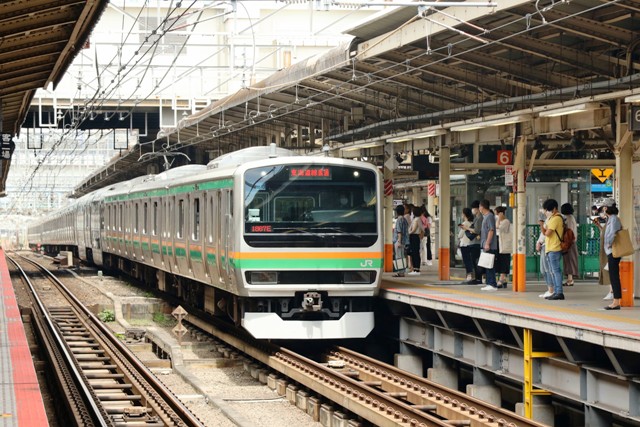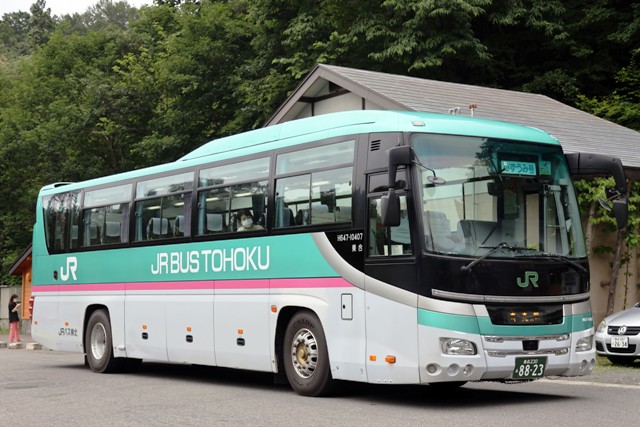Set 603 of the EMU Keikyu 600 series travels on the Hokuso line (February, 2018)
There are many railway companies in the Tokyo metropolitan area. These companies are in competition to attract passengers. It might be hard to imagine for foreigners, but I expect you understand that the railway network in this area is quite dense, so, it allows passengers to choose the best line to get to their destination.
Keikyu is one of the major companies in the Tokyo metropolitan area. They have an 87 kilometers line network in the southern part of the region. This company faces fierce competition from Tokyo Monorail Company on the route between downtown Tokyo and Tokyo International (Haneda) Airport. Furthermore, Keikyu is also exposed to competition with JR East on the section between downtown Tokyo and Yokohama station. The important factors are fares, speed and passenger services.
In 1994, Keikyu launched a new train, the EMU 600 series, to improve their passenger services. The 600 series is a commuter train, but it has comfortable cross seats in the cabin to provide passengers with good services. 14 sets (88 cars) were built by Tokyu Sharyo and Kawasaki Heavy Industries from 1994 to 1996. The body is aluminum alloy and painted with red and cream colors. With regard to the technical specifications, the 600 series has a GTO-VVVF inverter (variable frequency drive) electric control system with 120 or 180 kW induction motors. The 600 series is directly operated onto the Toei-Asakusa, Keisei, Hokuso and other lines.
The EMU 600 series opened a new era on the Keikyu line.
 |
| Set 654 of the EMU Keikyu 600 series leaves Shinagawa station (July, 2014) |













